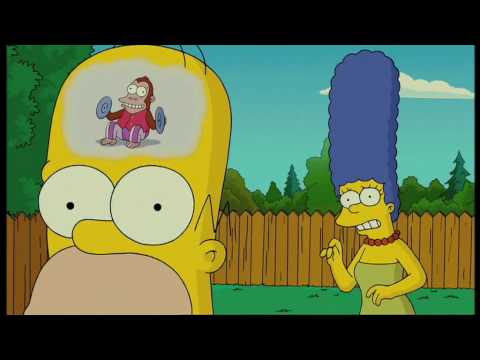Human facial recognition properties are found in a neural network built like a monkey's brain.
Scientists based on studies of monkey brain created a neural network capable of recognizing faces, and found in it characteristics characteristic of both monkeys and humans. For example, it is easier for her to recognize a face rotated three-quarters, and it is more difficult to recognize a person from an inverted photo.

Neurologists used magnetic resonance imaging to examine how the monkey's brain responds to familiar faces. Scientists have discovered that when they see a face, the brain is highlighted in nine different zones. These zones were called "facial patches", suggesting that they form a network responsible for recognition.
')
Amirhuseyn Farzamhdi from the Institute for Basic Science Research in Tehran, Iran, together with several colleagues from around the world, built neural networks, each of which replicates the functions found in the monkey brain. They combined development in one neural network capable of recognizing faces. The system has demonstrated a behavior characteristic of both monkeys and people.
The neural network consists of six layers. The first two recognize the boundaries as the visual zones V1 and V2. The next two layers recognize parts of the face — the eyes, the nose, the mouth — simulate the behavior of zone V4. The last layer compares the image with the person.
Farzamhdi and colleagues trained the system using several image bases. One of them contained 740 photos - 37 images of 20 people taken from different angles. The other base consisted of photographs of 90 people, also taken from 37 angles.

Interestingly, these principles are peculiar to man, and only this facial recognition system reproduces these biological characteristics. For the first time, scientists were able to artificially reproduce the behavior of both man and monkey.
If this approach worked with sight, then can it be used to recreate the hearing, touch, vestibular apparatus?

Neurologists used magnetic resonance imaging to examine how the monkey's brain responds to familiar faces. Scientists have discovered that when they see a face, the brain is highlighted in nine different zones. These zones were called "facial patches", suggesting that they form a network responsible for recognition.
')
Amirhuseyn Farzamhdi from the Institute for Basic Science Research in Tehran, Iran, together with several colleagues from around the world, built neural networks, each of which replicates the functions found in the monkey brain. They combined development in one neural network capable of recognizing faces. The system has demonstrated a behavior characteristic of both monkeys and people.
How to build and train the network?
The neural network consists of six layers. The first two recognize the boundaries as the visual zones V1 and V2. The next two layers recognize parts of the face — the eyes, the nose, the mouth — simulate the behavior of zone V4. The last layer compares the image with the person.
Farzamhdi and colleagues trained the system using several image bases. One of them contained 740 photos - 37 images of 20 people taken from different angles. The other base consisted of photographs of 90 people, also taken from 37 angles.

What have scientists discovered?
- The optimal angle for recognition is a three-quarter turn.
- It is more difficult to recognize faces when they are turned over.
- Composite images (half the face of one person, half the other) looks to the brain like an unfamiliar face.
- After training on a photo of people of one race, the system is more difficult to recognize a person of another race.
Interestingly, these principles are peculiar to man, and only this facial recognition system reproduces these biological characteristics. For the first time, scientists were able to artificially reproduce the behavior of both man and monkey.
If this approach worked with sight, then can it be used to recreate the hearing, touch, vestibular apparatus?
Source: https://habr.com/ru/post/376609/
All Articles